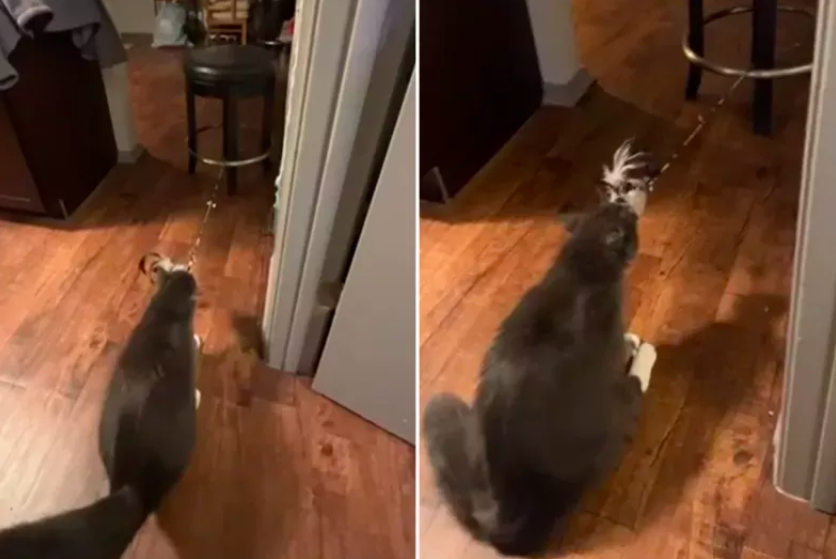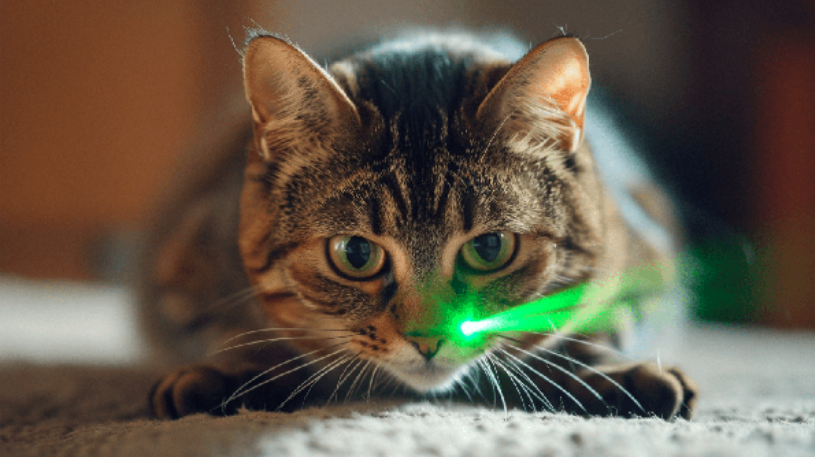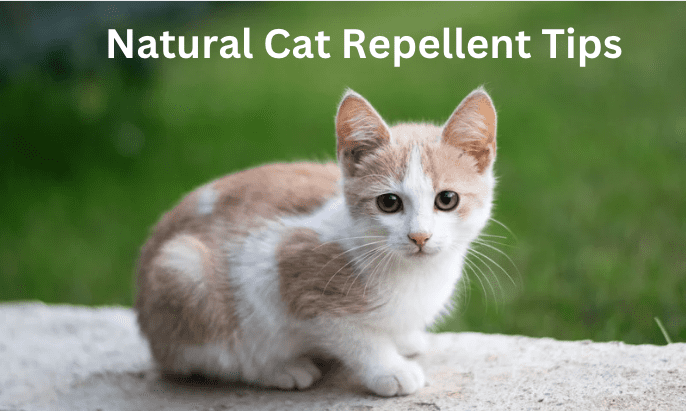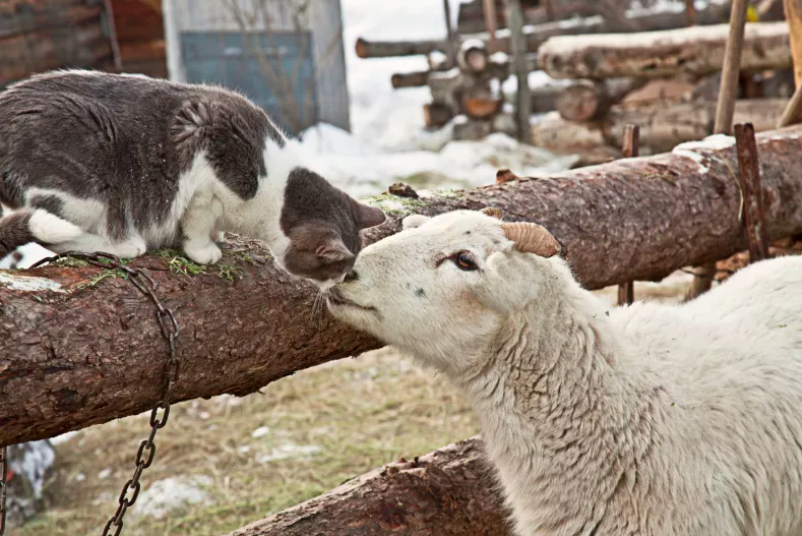Cats
What Are The Signs That My Cat Contacts Ringworm? | Find Out

What Are The Signs That My Cat Contacts Ringworm? | Find Out
One of the most essential pieces of information on the condition is that ringworm is caused by a fungus and not a worm or other parasite.
The fungal skin infection known as ringworm gets its name from the ring-shaped rash that frequently appears on the skin of a person or animal affected by the condition.
The fungus known as Microsporum canis is responsible for the majority of ringworm infections that occur in cats.
Is treatment necessary for my cat’s ringworm?
Ringworm is a curable condition despite its contagious nature and the ease with which it can spread.
Although any cat has the potential to become infected with ringworm, the disease is most common in young cats and those with long hair.
If you notice or observe that your cat is losing its hair, has circular blisters on its skin, or is grooming itself excessively, ringworm may be the culprit.
How Does Ringworm In Cats Often Spread?
A fungus that feeds on dead skin, hair, and nail tissue can cause ringworm. This fungus also causes athlete’s foot.
When a human or animal contacts a fungus, it immediately makes its home on the uppermost layer of the host’s skin, hair, or nails.
After the initial contact, it might take anywhere from one to two weeks for signs of the infection to manifest themselves.
If a cat has come into close touch with an infected animal, person, object, or surface, then the cat is at risk of contracting ringworm.
The same thing is true for humans; you risk contracting ringworm if you come into contact with the infective spores on the animal itself or an item contaminated with spores.
Because the spores can remain dormant on items and surfaces for up to two years, it can be challenging to locate the initial point of infection and stop the disease from spreading.
If you have reason to believe that your cat is infected with ringworm, there is a chance that the infection could spread to either humans or other animals living in your home.
Sanitizing the surfaces and objects in your home will help limit the chance for the infection to spread around the neighborhood. Physically fit humans with robust immune systems have a lower risk of contracting ringworm.
Cats Showing Signs Of Having Ringworm
Asymptomatic
Some cats with ringworm won’t show any symptoms at all. There are several explanations for why this is the case.
The onset of symptoms may be delayed if the first fungal infection happened during the past two weeks. If this is the case, the infection may still be in its early stages.
Second, if a cat has long hair and becomes infected, the common symptoms of balding and circular blisters on the skin may be difficult to spot since too much hair is covering them.
Third, some cats are asymptomatic carriers, which means that they may never show any symptoms of the illness, even though they have ringworm and can spread it to other cats and people. This does not indicate that they do not carry the virus, however.
Damage, thinning, or discoloration of the hair
Hair loss is a primary warning symptom of ringworm in cats because the fungus that causes ringworm feed on dead skin, hair, and nail tissues.
There is a chance that your cat has small, medium, or even big bald patches. The bald spots may have a round shape and appear as round wounds on the skin.
Your cat may also exhibit signs of hair damage; areas of their once healthy and lustrous coat may now have weaker or damaged hair patches. T
heir mane may look unkempt or discolored. When an animal has ringworm infection, the fungal spores can travel from the skin’s surface into the hair shafts, resulting in hair loss, damage, and discoloration.
Skin Inflammation
Inflammation of the skin is a typical manifestation of ringworm. There are a few various ways that this can take shape. Your cat’s head, ears, tail, and feet may have developed scaly, flaky skin. The appearance of the skin will be dry, scaly, or crusty.
Dandruff is one of the symptoms that can be associated with this condition. If you find that your cat has a lot of dandruff in their fur or is falling off of their body when they are scratching or grooming, you should go over its skin to see if there are any patches of dry, scaly skin.
Your cat’s skin may also develop discoloration, red lumps, or blisters. In most cases, ringworm can be recognized by the round, red lesions it leaves behind on the skin.
Because cats are entirely covered in fur, it may be more difficult to detect this condition in cats than in humans. You should comb your cat’s fur to look for any parts of the animal’s skin that have become irritated, red, or have new sores, lumps, or inflammation.
Cats can have patches of dry, scaly skin, sores that are circular and red, or both.
Infected Fingernails
Ringworm can sometimes infect a cat’s claws and nail beds, but this is far less common. Examine the underside of your cat’s claws to see whether or not they are brittle, broken, pitted, or scaly.
An Excessive Amount of Grooming
As a result of the damage that ringworm does to the tissues of the skin, hair, and nails, these areas may become itchy or uncomfortable.
Your cat may start grooming excessively due to this, often concentrating on one or more regions where the infection is most obvious.
Managing The Treatment Of Ringworm In Cats
Before treatment can begin, your cat will need to be examined by a veterinarian to determine whether or not it has ringworm.
They might examine the fungus spores in your cat’s fur with UV light to identify them. They might also collect a sample of your cat’s fur or skin or do a culture test.
You will be able to start treating your cat once it has been determined that ringworm was the cause of the infection. In most cases, this requires a multi-pronged approach that includes topical, oral, and environmental treatment.
Medication Both Topically Ond Orally
The infection’s severity level will determine how extensive the topical therapy needs to be. In cases of localized infections, antifungal creams can be used topically as a spot treatment on the affected skin areas.
In cases of more advanced illnesses, your cat’s coat may need to be trimmed, and your cat may also require a bath with an antifungal shampoo.
When deciding whether or not your pet requires washing or clipping, it is best to follow your veterinarian’s recommendations.
Oral antifungal medication is another method that can be utilized to treat fungal infections. This kind of medication is referred to as “systemic medication,” and it is an essential part of the treatment regimen for ringworm.
Environmental
Any item or surface touched by your diseased cat should either be disinfected or thrown away.
Decontaminating your home is vital for preventing the spread of ringworm since the fungus can survive on inanimate objects and horizontal surfaces for up to two years.
Wash your cat’s bedding, blankets, and any other textile material that it may have slept on or rubbed against thoroughly. Clean the floors, the surfaces, and all of the furniture.
A cleaner should be used to wipe down hard surfaces and floors, and you should also consider performing a deep cleaning on your carpets.
When your cat is recuperating, it is smart to confine it to a single room or section of the house. This may help prevent re-infection or the spread of infection.
Self-Resolve
If your cat is otherwise healthy and has a robust immune system, the ringworm infection may go away independently without needing any treatment over time.
On the other hand, this process can take up to a year, which means there is a strong possibility that the fungal spores will spread in your home yard during the time it takes for your cat to recover from the illness.
Because of hair loss and skin irritation, your cat will most likely be extremely uncomfortable during that time. By administering therapy to your cat, you can help it feel better and prevent the infection from spreading to other cats.
Cats Can Get Better And Learn How To Avoid Ringworm
Expect that your cat will require at least four to six weeks of continuing treatment once the initial phase of treatment has been completed.
Even when therapy is being administered continuously, the illness might still be spread over that period.
The most crucial thing you could do is listen to your veterinarian’s recommendations and complete the prescribed course of therapy. Reinfection is possible if treatment is discontinued too soon.
Because consistent cleaning and decontamination will assist in permanently removing the ringworm fungus from your home, you must continue your decontamination efforts regularly for the next four to six weeks at your residence.
Questions People Also Ask: (FAQs)
What Are The Signs That My Cat Contacts Ringworm?
What are the common symptoms of ringworm in cats?
Common symptoms include patchy hair loss, scaly or red skin, and itching.
Can cats show no signs of ringworm but still have it?
Yes, some cats can be carriers of ringworm and not show any symptoms.
Is ringworm in cats contagious to humans?
Yes, ringworm is a contagious fungal infection that can be transmitted from animals to humans.
How does ringworm in cats typically appear on the skin?
Ringworm in cats typically appears as round, scaly patches of hair loss.
Is it normal for cats to lose hair due to ringworm?
Patchy hair loss is a common symptom of ringworm in cats.
Are there any specific areas of the cat’s body where ringworm is more likely to appear?
Ringworm is more likely to appear on the head, ears, and forelegs of cats, but it can occur anywhere on the body.
Is there any way to diagnose ringworm in cats without a veterinarian?
No, it is best to have a veterinarian diagnose ringworm. They may use a Wood’s lamp or culture to diagnose ringworm.
What are some treatment options for ringworm in cats?
Treatment options include antifungal medication, topical ointments, and medicated shampoos.
Will ringworm in cats go away on its own?
No, ringworm is a fungal infection that requires treatment. If left untreated, it can cause severe skin damage and secondary infections.
Are there any preventive measures I can take to protect my cat from getting ringworm?
Keeping your cat’s environment clean and dry, and avoiding contact with infected animals can help prevent ringworm. If you suspect that your cat may have ringworm, it is best to consult a veterinarian.
We appreciate you for taking the time to read this article!
Finally, we hope you found this article interesting? And what do you think about ”What Are The Signs That My Cat Contacts Ringworm? | Find Out!?”
Please you should feel free to share or inform your friends about this article and this site, thanks!
And let us know if you observe something that isn’t quite right.
Cats
Clever Cats: Breeds That Learn Fast

Clever Cats: Breeds That Learn Fast
Cats have always fascinated us with their agility, independence, and sometimes enigmatic behavior. Among the vast array of feline breeds, some stand out for their remarkable intelligence and ability to learn quickly.
In this article, we will delve into the world of these exceptional cat breeds, exploring their unique characteristics, training capabilities, and what makes them such quick learners.
Whether you’re a seasoned cat owner or considering adopting a new feline friend, this comprehensive guide will help you understand the breeds that are not only intelligent but also a joy to train.
Why Intelligence Matters in Cats
Understanding Feline Intelligence
Feline intelligence is a multi-faceted trait that encompasses problem-solving abilities, social learning, and adaptability. Unlike dogs, cats often showcase their intelligence in more subtle ways, such as manipulating objects to get what they want or learning routines and commands.
Benefits of Owning Intelligent Cats
Owning an intelligent cat comes with several benefits. These cats are more interactive and engaging, making them excellent companions. They can learn tricks, follow commands, and even understand basic household rules, which makes living with them more enjoyable and less challenging.
Top Cat Breeds Known for Their Intelligence
Abyssinian
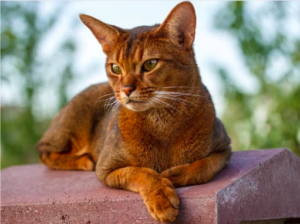
Overview
The Abyssinian is often hailed as one of the smartest cat breeds. Known for their curiosity and playful nature, Abyssinians are quick learners who thrive on mental stimulation.
Training and Activities
Abyssinians are highly trainable and enjoy interactive toys and puzzle feeders. They can learn tricks such as fetching and even walking on a leash. Their love for heights means they appreciate cat trees and climbing structures.
Siamese
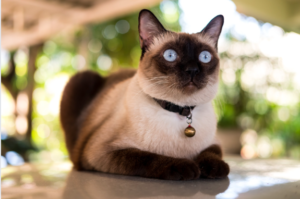
Overview
Siamese cats are not only intelligent but also highly vocal and sociable. They form strong bonds with their owners and are always eager to engage in activities.
Training and Activities
Siamese cats are quick to learn tricks and commands. They enjoy interactive play and can be trained to perform simple tasks like opening doors or retrieving items. Their vocal nature also makes them responsive to verbal cues.
Bengal
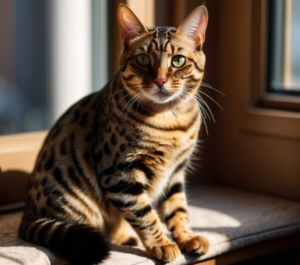
Overview
Bengals are known for their striking appearance and high energy levels. Their intelligence is reflected in their ability to solve problems and learn complex tasks.
Training and Activities
Bengals enjoy activities that challenge their minds, such as agility courses and puzzle toys. They can be trained to walk on a leash and perform tricks. Providing them with interactive playtime helps in channeling their energy positively.
Burmese
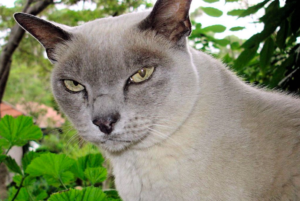
Overview
Burmese cats are affectionate, people-oriented, and intelligent. They enjoy being involved in family activities and can be trained to follow various commands.
Training and Activities
Burmese cats are quick learners and respond well to positive reinforcement. They enjoy learning tricks, playing fetch, and interactive games that stimulate their minds.
Scottish Fold
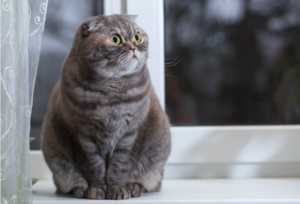
Overview
Scottish Folds are known for their distinctive folded ears and sweet demeanor. Despite their calm appearance, they are intelligent and can learn quickly.
Training and Activities
Scottish Folds enjoy interactive toys and games. They can learn tricks and commands and appreciate routines that keep their minds engaged.
Training Tips for Intelligent Cats
Start Early
Begin training your cat as early as possible. Kittens are more receptive to learning new behaviors and routines.
Use Positive Reinforcement
Reward your cat with treats, praise, or playtime whenever they successfully perform a desired behavior. Positive reinforcement strengthens the association between the action and the reward.
Keep Sessions Short and Fun
Cats have shorter attention spans than dogs, so keep training sessions brief and enjoyable. Incorporate playtime to make learning fun for your cat.
Be Patient and Consistent
Patience and consistency are key when training cats. Repeat commands and routines regularly, and avoid punishing your cat for mistakes. Consistency helps reinforce learning and builds trust.
Challenges of Training Intelligent Cats
Independence and Stubbornness
Intelligent cats can sometimes be independent and stubborn. They might choose to ignore commands if they are not in the mood, so it’s important to understand their behavior and work with it.
Need for Mental Stimulation
Highly intelligent cats require constant mental stimulation. Boredom can lead to behavioral issues, so ensure they have plenty of toys, activities, and interaction to keep their minds engaged.
Managing High Energy Levels
Breeds like Bengals have high energy levels that need to be managed. Providing them with enough physical and mental exercise is crucial to prevent destructive behavior.
Living with Intelligent Cats
Creating an Enriched Environment
An enriched environment is essential for intelligent cats. This includes a variety of toys, climbing structures, scratching posts, and interactive feeders to keep them stimulated.
Social Interaction
Intelligent cats thrive on social interaction. Spend quality time playing, training, and simply bonding with your cat to ensure they feel valued and engaged.
Understanding Their Needs
Each intelligent breed has its own unique needs and preferences. Understanding these and catering to them will help you build a strong and positive relationship with your cat.
Conclusion
Owning an intelligent cat can be an incredibly rewarding experience. These quick learners bring joy, challenge, and companionship to their owners. By understanding their unique characteristics and providing the right environment and training, you can foster a deep and fulfilling relationship with your feline friend.
Whether you choose an Abyssinian, Siamese, Bengal, Burmese, or Scottish Fold, you’re sure to enjoy the remarkable intelligence and personality they bring into your home.
Frequently Asked Questions (FAQs)
What makes a cat breed intelligent?
Intelligent cat breeds often show high levels of problem-solving abilities, adaptability, and social learning. They can quickly learn commands, tricks, and routines.
Can all cats be trained?
While some breeds are more receptive to training than others, all cats can be trained to some extent. Patience, consistency, and positive reinforcement are key to successful training.
What are the best toys for intelligent cats?
Interactive toys, puzzle feeders, and climbing structures are ideal for intelligent cats. These toys provide mental stimulation and keep them engaged.
How do I keep my intelligent cat from getting bored?
Provide a variety of toys, engage in regular playtime, and introduce new activities regularly. Rotating toys and creating an enriched environment also help prevent boredom.
Are intelligent cats more difficult to care for?
Intelligent cats can be more demanding in terms of mental stimulation and interaction. However, with the right approach and environment, they can be delightful companions.
We appreciate you for taking the time to read this article!
Finally, we hope you found this article interesting? And what do you think about ”Clever Cats: Breeds That Learn Fast!?”
Please feel free to share or inform your friends about this article and this site, thanks!
And let us know if you observe something that isn’t quite right.
Cats
The Enchanting Scottish Fold: A Guide to the Adorable Feline with Folded Ears
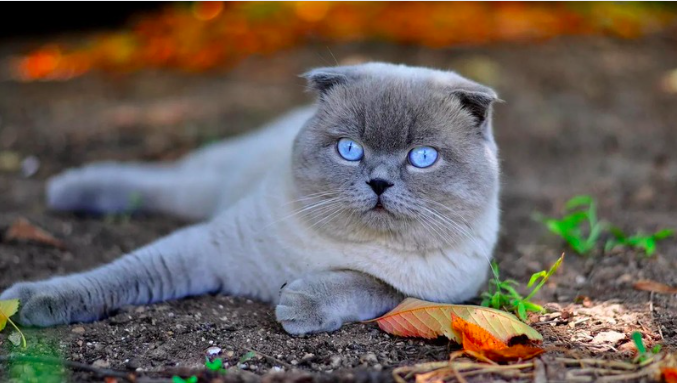
The Enchanting Scottish Fold: A Guide to the Adorable Feline with Folded Ears
Welcome to the world of the Scottish Fold cat, where charm and curiosity meet in an irresistibly adorable package. With their distinctive folded ears and sweet expression, Scottish Folds have captured the hearts of cat lovers around the world. Originally hailing from Scotland, these cats are known for their gentle demeanor, playful nature, and loving personality.
In this comprehensive guide, we will delve into the fascinating world of Scottish Fold cats, exploring their history, physical characteristics, personality traits, and care requirements. Whether you’re a seasoned cat owner or considering adding a feline friend to your family, the Scottish Fold’s unique charm and affectionate nature make them a delightful addition to any home. Join us as we unravel the enchanting tale of the Scottish Fold cat and discover why they are such beloved companions.
Fold
Overview
The Scottish Fold cat is a charming and distinctive breed known for its unique folded ears and sweet expression. Originating from Scotland in the 1960s, these cats have captured the hearts of many with their endearing appearance and affectionate nature. Scottish Folds are known for their gentle and loving temperament, making them wonderful companions for families and individuals alike.
History and Origins
The Scottish Fold breed traces its roots back to a white barn cat named Susie, who was found in Scotland in the early 1960s. Susie had a unique genetic mutation that caused her ears to fold forward, giving her an owl-like appearance. This trait was passed down to her kittens, and thus, the Scottish Fold breed was born. The breed quickly gained popularity for its distinctive look and friendly demeanor, and it was officially recognized by cat registries in the 1970s.
Physical Characteristics
- Folded Ears: The most distinctive feature of the Scottish Fold is its folded ears, which give the cat a sweet and owl-like appearance. Not all Scottish Folds have folded ears; some may have straight ears, known as “straights,” which are also common in the breed.
- Coat and Colors: Scottish Folds can have either a short or long coat, both of which are dense and plush. They come in a variety of colors and patterns, including tabby, tortoiseshell, and solid colors like white, black, and blue.
- Body Structure: Scottish Folds are medium-sized cats with a rounded appearance. They have sturdy bodies, round faces, and large, expressive eyes that give them a sweet and gentle expression.
Personality and Behavior
Scottish Folds are known for their calm and laid-back demeanor. They are affectionate cats that enjoy being around people and are often described as “lap cats” due to their love of cuddling. They are also known for their playful nature and enjoy interactive toys and games. Scottish Folds are generally good with children and other pets, making them a great choice for families.

Health and Care
- Ear Care: Due to their folded ears, Scottish Folds may be prone to ear infections. It’s important to regularly check and clean their ears to prevent issues.
- Grooming: Scottish Folds have dense coats that require regular grooming to prevent matting and tangling. Weekly brushing is usually sufficient to keep their coat in good condition.
- Health Concerns: Scottish Folds are generally healthy, but they may be prone to certain genetic conditions, including a skeletal disorder known as osteochondrodysplasia. Responsible breeding practices can help minimize the risk of these health issues.
Training and Activities
Scottish Folds are intelligent cats that can be trained to perform tricks and commands. They enjoy interactive play and benefit from toys that stimulate their minds and bodies. Providing them with scratching posts and other outlets for their natural behaviors can help keep them happy and healthy.
Compatibility with Families and Other Pets
Scottish Folds are known for their gentle and affectionate nature, making them great companions for families. They are good with children and other pets, including dogs, and can adapt well to different environments. Their loving and sociable nature makes them a popular choice for households looking for a friendly and affectionate pet.
Conclusion
The Scottish Fold cat is a unique and charming breed known for its folded ears and sweet expression. With their gentle demeanor and affectionate nature, Scottish Folds make wonderful companions for families and individuals alike. Whether you’re looking for a lap cat to cuddle with or a playful friend to keep you entertained, the Scottish Fold cat is sure to bring joy and companionship to your home.
FAQs about Scottish Fold Cats
Why do Scottish Folds have folded ears?
Scottish Folds have a genetic mutation that affects the cartilage in their ears, causing them to fold forward. This unique trait gives them their distinctive appearance.
Are Scottish Folds prone to ear problems due to their folded ears?
Yes, Scottish Folds may be more prone to ear infections due to the fold in their ears, which can trap dirt and moisture. Regular cleaning and monitoring of their ears can help prevent issues.
Do Scottish Folds have any health issues associated with their folded ears?
Scottish Folds may be prone to a condition called osteochondrodysplasia, which affects the development of their cartilage and bones. Responsible breeding practices can help reduce the risk of this condition.
Are Scottish Folds good with children and other pets?
Scottish Folds are known for their gentle and friendly nature, making them good companions for families with children and other pets. They enjoy socializing and being part of the family.
Do Scottish Folds require a lot of grooming?
Scottish Folds have dense coats that require regular grooming to prevent matting and tangles. Weekly brushing is recommended to keep their coat in good condition.
We appreciate you for taking the time to read this article!
Finally, we hope you found this article interesting? And what do you think about ”The Enchanting Scottish Fold: A Guide to the Adorable Feline with Folded Ears!?”
Please feel free to share or inform your friends about this article and this site, thanks!
And let us know if you observe something that isn’t quite right.
Cats
The Enchanting Burmese Cat: Affectionate, Playful, and Loyal
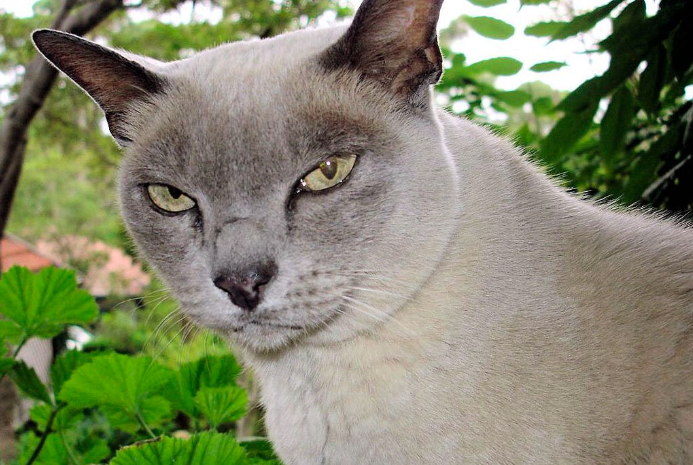
The Enchanting Burmese Cat: Affectionate, Playful, and Loyal
Enter the world of the Burmese cat, where elegance meets affection in a charming feline companion. Originating from the temples of Burma, these cats have captured the hearts of cat lovers worldwide with their striking appearance and loving nature. With their sleek coats, expressive eyes, and playful demeanor, Burmese cats are not just pets; they are cherished members of the family.
In this comprehensive guide, we delve into the captivating world of Burmese cats, exploring their history, physical characteristics, personality traits, and care requirements. Whether you’re a seasoned cat owner or considering adding a feline friend to your family, the Burmese cat’s unique blend of beauty, intelligence, and affection is sure to captivate you. Join us as we unravel the enchanting tale of the Burmese cat and discover why they are such beloved companions.
Burmese
Overview
The Burmese cat is a breed known for its striking appearance and affectionate nature. Originating from Burma (now Myanmar), these cats are renowned for their sleek, muscular bodies, expressive eyes, and silky coats. Burmese cats are often described as “people-oriented,” as they form strong bonds with their human companions and enjoy being part of the family. Their playful and curious nature makes them delightful companions for both children and adults alike.
History and Origins
The history of the Burmese cat can be traced back to ancient Burma, where they were considered sacred and kept by monks in temples. They were later brought to the West in the early 20th century and quickly gained popularity for their striking appearance and affectionate personality. The breed has since become a favorite among cat enthusiasts worldwide, known for its loving and loyal nature.
Physical Characteristics
- Coat and Colors: Burmese cats have short, sleek coats that lie close to the body. They come in a variety of colors, including sable, champagne, blue, and platinum. The coat is soft and silky to the touch, adding to the breed’s overall charm.
- Body Structure: Burmese cats are medium-sized with a muscular build. They have rounded heads, large, expressive eyes, and short, straight noses. Their compact bodies give them a sturdy appearance, and they move with grace and agility.
- Eyes and Ears: Their eyes are one of their most striking features, being large, expressive, and usually a deep, rich color that complements their coat. Their ears are medium-sized, slightly rounded at the tips, and set wide apart on the head.
Personality and Behavior
Burmese cats are known for their affectionate and sociable nature. They are often described as “dog-like” due to their tendency to follow their owners around the house and seek out human companionship. They are also highly intelligent and enjoy interactive play, making them great companions for families with children or other pets.
In addition to their affectionate nature, Burmese cats are also known for their vocalizations. They have a soft, sweet voice that they use to communicate with their owners, often engaging in “conversations” and expressing their needs and desires.
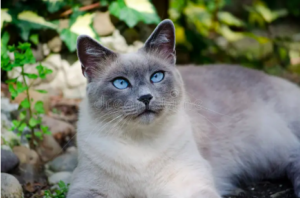
Health and Care
- Grooming: Burmese cats have short coats that require minimal grooming. Weekly brushing is usually sufficient to remove loose hair and keep their coat shiny. They also benefit from regular dental care to prevent oral health issues.
- Diet: A high-quality, balanced diet is essential for maintaining the health and vitality of Burmese cats. They should be fed a diet that is appropriate for their age, size, and activity level to ensure they receive the nutrients they need.
- Health Concerns: Burmese cats are generally healthy, but they can be prone to certain genetic conditions such as hypertrophic cardiomyopathy (HCM) and diabetes. Regular veterinary check-ups and a healthy diet can help manage these risks.
Training and Activities
Burmese cats are intelligent and can be trained to perform various tricks and commands. They enjoy interactive play and thrive on mental stimulation. Providing them with toys, puzzle feeders, and opportunities for play can help keep them entertained and prevent boredom.
Compatibility with Families and Other Pets
Burmese cats are known for their loving and social nature, making them great companions for families. They get along well with children and other pets, including dogs, as long as they are properly introduced. Their affectionate demeanor and playful nature make them a popular choice for households looking for a friendly and engaging pet.
Conclusion
The Burmese cat is a breed beloved for its affectionate nature, striking appearance, and playful personality. Whether you are looking for a loyal companion or a playful friend, the Burmese cat is sure to bring joy and warmth to your home. With their loving nature and sociable demeanor, Burmese cats make wonderful pets for families and individuals alike, enriching their lives with their presence and affection.
FAQs about Burmese Cats
What is the temperament of a Burmese cat like?
Burmese cats are known for their affectionate and social nature. They are often described as “dog-like” due to their loyalty and tendency to follow their owners around the house. They enjoy being involved in family activities and form strong bonds with their human companions.
Are Burmese cats good with children and other pets?
Yes, Burmese cats are generally good with children and other pets. They are playful and enjoy interactive play, making them great companions for families with children. They also get along well with other pets, including dogs, especially if they are introduced properly.
Do Burmese cats require a lot of grooming?
Burmese cats have short, sleek coats that require minimal grooming. Weekly brushing is usually sufficient to remove loose hair and keep their coat shiny. They also benefit from regular dental care to prevent oral health issues.
Are Burmese cats vocal?
Burmese cats are known for their soft, sweet voice, but they are not excessively vocal. They use their voice to communicate with their owners, often engaging in “conversations” and expressing their needs and desires.
What kind of environment is best for a Burmese cat?
Burmese cats thrive in environments where they have plenty of opportunities for play and interaction. They enjoy being part of the family and should have access to toys, scratching posts, and other enrichment activities. They also enjoy having access to outdoor enclosures or safe outdoor spaces where they can explore and indulge their natural instincts.
We appreciate you for taking the time to read this article!
Finally, we hope you found this article interesting? And what do you think about ”The Enchanting Burmese Cat: Affectionate, Playful, and Loyal!?”
Please feel free to share or inform your friends about this article and this site, thanks!
And let us know if you observe something that isn’t quite right.
-

 Pet Care2 years ago
Pet Care2 years agoThe Best Dog Collars For 2022
-

 Dogs2 years ago
Dogs2 years agoBichon Frise: The Happy, Playful, and Cuddly Companion
-

 Trending Pet Stories1 year ago
Trending Pet Stories1 year ago2023 ‘World’s Ugliest Dog’ Winner: Scooter’s Tale of Resilience
-

 Animals3 years ago
Animals3 years agoAre There Animals Having Down Syndrome?
-

 Pets2 years ago
Pets2 years agoThe Fascinating World Of The Red Chameleon
-

 Dogs3 years ago
Dogs3 years agoTop 10 Most Popular Dog Breeds According To AKC.
-

 Dogs3 years ago
Dogs3 years ago21 Dog Breeds That Resemble Bears Or Teddy Bears!
-

 Dogs3 years ago
Dogs3 years agoEskimo Dogs from Canada – What Are They? – Find Out!


